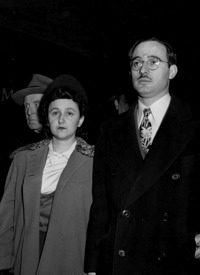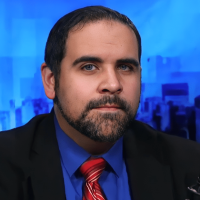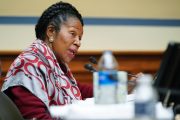
In what sounded like a news headline taken from the height of the Cold War in 1950s, the U.S. Department of Justice announced on Monday, June 28, that 11 individuals had been charged for espionage and conspiracy on behalf of the Russian government.
Ten out of the 11 conspirators have been arrested and detained; the other still remains at large. The Russian conspirators have been identified as Anna Chapman, Mikail Semenko, Christopher R. Metsos, Richard Murphy, Cynthia Murphy, Donald Howard Heathfield, Tracey Lee Ann Foley, Michael Zottoli, Patricia Mills, Juan Lazaro, and Vicky Pelaez.
The charges against these 11 individuals were filed in the U.S. District Court for the Southern District of New York, located in Brooklyn.
Amit Kachhia-Patel and Maria L. Ricci, both FBI special agents currently assigned to the Counterintelligence Division within the FBI’s New York Field Office, brought up the charges to the Court.
According to the documented charges, the FBI has been conducting a multi-year investigation on a network of U.S.-based covert Russian operatives working for the SVR, Russia’s foreign intelligence agency and a successor to the Soviet Union’s KGB.
Working undercover and through the use of other lawful authorized surveillance, the FBI has ascertained a great deal of information from the Russian agents, all of whom reside in various metropolitan cities throughout the United States.
According to FBI investigations, the Russian agents’ stated goal, from the SVR, was to “become sufficiently ‘Americanized’ such that they can gather information about the United States for Russia, and can successfully recruit sources who are in, or are able to infiltrate, the United States policy-making circles.”
The FBI decrypted the SVR orders sent by Moscow Center (MC), which subsequently read as follows: “You were sent to USA for long-term service trip. Your education, bank accounts, car, house etc. — all these serve one goal: fulfill your main mission, i.e. to search and develop ties in policymaking circles in US and send intels [intelligence reports] to C[enter].”
The FBI court documents also stated that to “further the aims of the conspiracy, Moscow Center has arranged for the defendants clandestinely to communicate with the Russian Federation.” The conspiratorial methods of communication included the use of ad-hoc wireless networks, between two or more laptop computers; radiograms, through short-wave radio transmissions; and steganography, a process by which images, found on public Internet websites, are imbedded with encrypted messages that can only be spotted and decrypted by a specially made SVR-provided software, which is unavailable to the general public.
In the case of SVR conspirators Vicky Pelaez and Christopher Metsos, they occasionally met with officials from the Russian government, based out of either the Permanents Russian Mission to the United Nations in Manhattan, Washington D.C., or an undisclosed “South American country.” Pelaez and Metsos would then, at such place and time, receive further instructions and large payments of money to be distributed to the other SVR conspirators in order to pay them and help cover their expenses.
Shockingly, one SVR conspirator, Donald Howard Heathfield, who operated out of Boston in 2004, reportedly met with a unidentified U.S. government employee with regard to nuclear weapons.
On September 23, 2005, Heathfield informed MC that he had “established contact” with a “former high-ranking United States Government national security official,” according to the FBI document.
Scarily reminiscent of the infamous 1950s Rosenberg KGB spies, another conspirator, operating out of Boston, perhaps Heathfield, reported in an encrypted message to MC, dated December 3, 2004, that he had made contact with an individual in the U.S. government who works on strategic operations of nuclear weapon deployment. The conspirator informed his superiors that his conversations with this government individual were in regards to research on “small yield high penetration nuclear weapons recently authorized by US Congress (nuclear ‘bunker-buster’ warheads).”
In a decrypted message, dated April 2006, the conspirators operating out of Boston, at the request of MC, were tasked to gather information on U.S. policies in regards to online anti-terrorist cyber-security, Central Asia, military problems, and “western estimation of [Russian] foreign policy.”
The Boston-based SVR conspirators relayed information back to MC with regard to the change in administrative leadership in the CIA following the election of President Obama, which they described as having learned and “received in private conversation with [name omitted], former legislative counsel for US Congress, specialist in [information omitted], member faculty of economics of [information omitted]. Has contacts within Congress and policymakers in Washington.”
Also requested by MC, prior to President Obama’s visit to Russia in 2009, was information on “the U.S. position with respects to a new Strategic Arms Limitation Treaty, Afghanistan, and Iran’s nuclear program.” MC asked its operatives to “try to outline their [the United States’] views and most important Obama’s goals which he expects to achieve during [the] summit in July.”
It would be interesting to know with which members of Congress, Washington policymakers, and former high-ranking national security officials that the SVR operatives were or are in contact with and the content of what information they were able to transmit back to Russia; unfortunately the documents do not state any specific names, if in fact the FBI even knows who in particular the conspirators were in contact with.
Art Thompson, CEO of The John Birch Society, told The New American: “The SVR is no different than the KGB. We, The John Birch Society, have been saying for years that Russia continues to remain a problem whether they call it communism or something else. Just as the KGB took on a new name, Russian communism did the same, and too many Americans have fallen for the false idea that Russian communism is dead simply because our media told them so.”
It should be noted that former President, now the Prime Minister of Russia, Vladimir Putin was a KGB agent in East Germany in the 1980s, later promoted to head of the FSB (the main successor to the KGB) in 1998.
Putin has filled his Cabinet with many former and current FSB and SVR agents. Although the Russian Communist Party might not be in power anymore, the former guardians of Soviet communism are now running the country from the inner sanctums of the Kremlin.
The news of this Russian espionage conspiracy came just a few days after Russian President Dmitry Medvedev paid a visit to Silicon Valley, California, to improve U.S.-Russo relations and announce a new cooperative partnership in the field of computer technology.
This news also comes around the same time as Chinese Communists have been accused of attempting to infiltrate the Canadian government; just days after Chinese President Hu Jintao visited the Canadian capital in Ottawa.
The 10 individuals under custody have yet to be found guilty of any federal or espionage crimes, as these claims still remain mere allegations.
Photo of the Rosenbergs: AP Images
Related articles:
KGB/FSB: The “Game” Remains the Same
U.S., Russia “Reset” the Convergence Agenda




